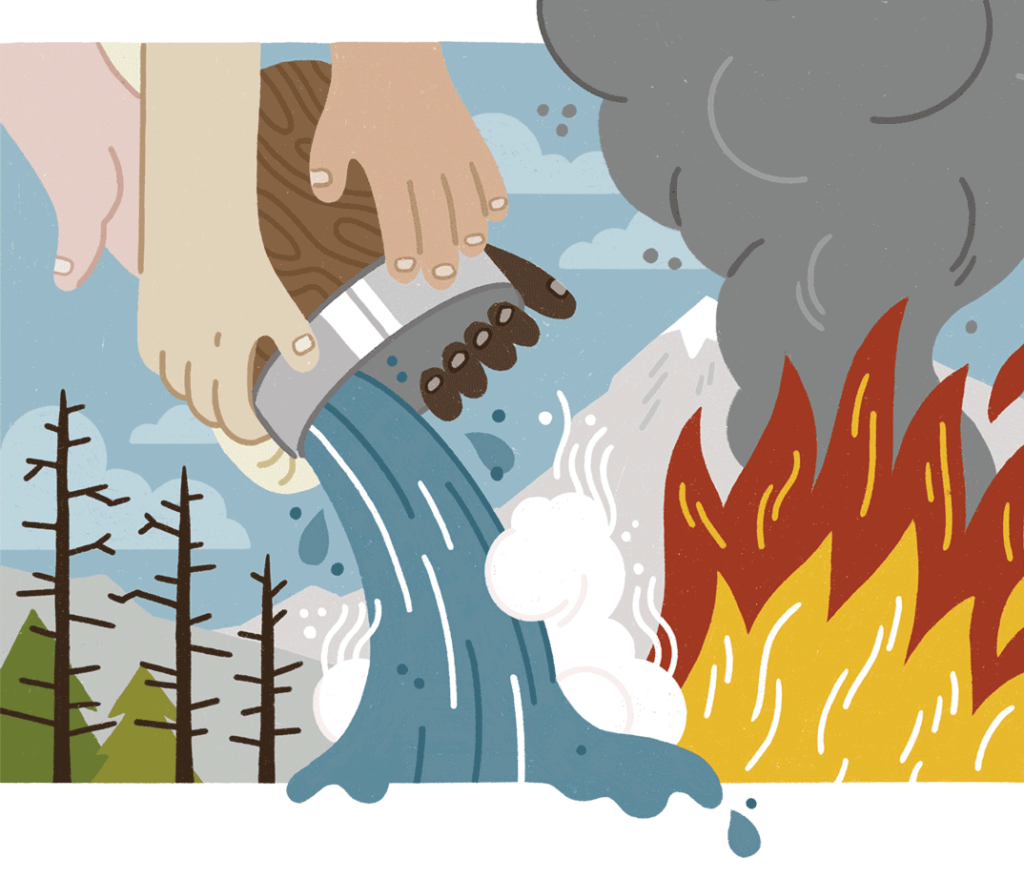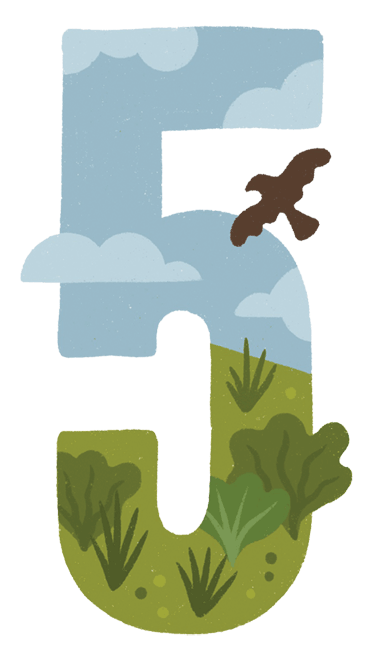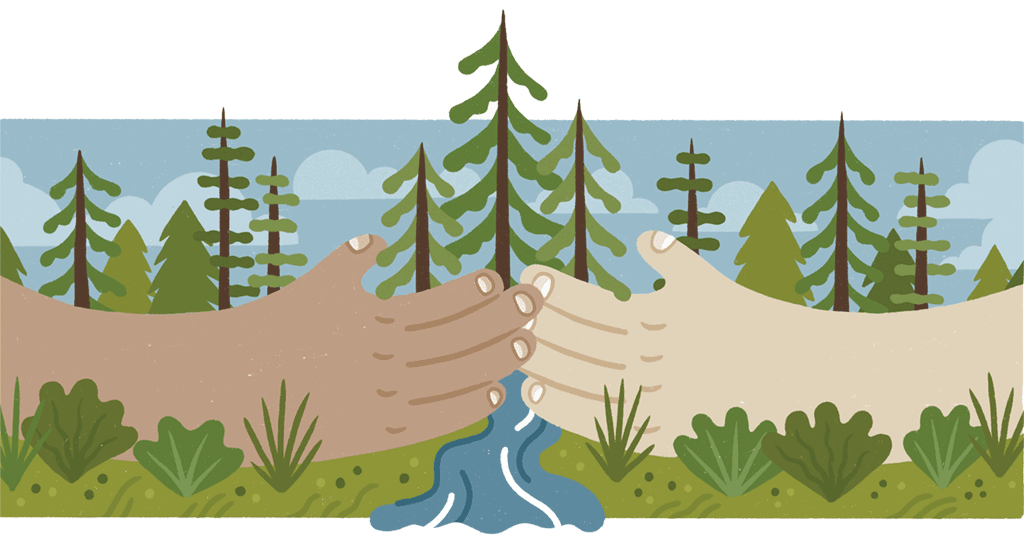
A warming planet is forcing us to face new realities: Hotter, drier summers. Western wildfires that burn into winter months – and in suburban neighborhoods. Dwindling groundwater for crops. Longer, more intense hurricane seasons. These aren’t blurry glimpses into a distant future where we will all be living with climate change – they’re happening now.
Just as scientific consensus tells us that human activities – mainly burning fossil fuels – are driving the rise in global temperatures, so is science fighting to reverse the tide. Thousands of researchers, including many at Colorado State University, are developing innovative strategies for combatting climate change, whether by sequestering carbon from the air in healthy, regenerated soils, or designing engines that decrease the worst greenhouse gas emissions.
Even as this and other work continues, it’s becoming apparent that humanity won’t solve the planet’s temperature crisis through emissions-curbing strategies and technical achievements alone. The most recent Intergovernmental Panel on Climate Change report tells us that the world will warm by more than 1.5 degrees Celsius by 2040 or sooner.
We must accept that climate change is here; adapting nimbly to this crisis of our time is the other half of our whole reality.
Climate adaptation
Across the extraordinary breadth of disciplines at CSU, the work required to deliver hope to future generations is taking shape through a team examining the consequences and opportunities that come with living with climate change. The Climate Adaptation Partnership is a consortium of faculty members and graduate students who are seeking to unravel the complexities of how humans can and must adapt to a hotter world, whether it’s fire management experts trying to build resilience in our drying forests, or historians exploring how humanity has repeatedly shown ingenuity and adaptability amidst tumult and change.
The Climate Adaptation Partnership was awarded a Catalyst for Innovative Partnerships grant by the Office of the Vice President for Research in 2020. The CIP program provides support to multidisciplinary research groups who work together on difficult, even existential, problems.
Led by Courtney Schultz from the Warner College of Natural Resources and Leisl Carr Childers from the College of Liberal Arts, the Climate Adaptation Partnership is taking a deep dive into what it means to create resiliency across disparate groups who are affected in different ways by climate change. That could mean farmers forced to change crops or irrigation practices as their fields dry up, or people living close to urban-wildland interfaces who face greater threats from wildfires.
The CSU partnership’s goals are in lockstep with federal agencies’ growing efforts to plan for and respond to climate change. The U.S. Department of Agriculture, among others, has released an “Action Plan for Climate Adaptation and Resilience” that reflects the Biden administration’s “whole-of-government” approach to climate.
“Every agency has put out these climate resilience strategies, so this is an important time to be thinking about these issues,” says Schultz, an associate professor in the Department of Forest and Rangeland Stewardship and director of the Public Lands Policy Group. “We want to build something that’s going to add value to the conversation.”
“We want to build something that’s going to add value to the conversation.”
–Professor Courtney Schultz
A love for public lands
Schultz and Carr Childers came together on the topic of climate adaptation through a shared love of American public lands – Schultz, as an expert in forest resilience and fire restoration, and Carr Childers, as a historian of the American West with a particular interest in environmental history and land management.
“Recognizing the challenges of adapting to climate change requires understanding of different social groups, their histories, and their relationships with governments,” Schultz says. “Bringing that social lens is incredibly important, especially for addressing equity and inclusivity, as climate change is fundamentally an equity issue.”
Through the Climate Adaptation Partnership, researchers focus on five major themes: climate-adaptive public land policy, including forest fire management; strategies to support healthy air and watersheds; integrated modeling that addresses social and ecological change over time; climate-adaptive agriculture and food security; and social and environmental justice to create thriving, inclusive communities in the face of profound climatic and demographic change.

MAJOR THEMES
Climate-adaptive public land policy
Strategies to support healthy air and watersheds
Integrated modeling that addresses social and ecological change over time
Climate-adaptive agriculture and food security
Social and environmental justice
“All the planks here represent ways in which, I think, historians can have some influence,” says Carr Childers, an associate professor in the Department of History. According to Carr Childers, most of the stories about societal interactions with environment and climate are often neglected within the framework of traditional climate research.
“Scientists ask very present-focused questions with little intentional consideration for the past,” Carr Childers says. “That means you’re not getting that deep study of how human beings operate, which is captured in my discipline.
“The past is always present,” she continues. “There’s nothing you can look at where the past isn’t in play. The problem is, it’s not always overt.”
Carr Childers’ published work in public lands history and management, which draws lessons from different landscapes across rural Utah and Nevada, can lend insight into enacting climate policies that do not always benefit everyone equally.
“How can the work that scientists do, at CSU or elsewhere, involve historians in order to deal more with this human component over time?” Carr Childers asks, noting that climate adaptation studies would benefit from a deeper time study of particular issues or policies.
“Policies don’t emerge out of the blue,” she says. “They’re attached to a bunch of other things, which have a deeper story.”

Building community
Schultz envisions the partnership as a place for academic disciplines to work together around various aspects of climate adaptation. She wants CSU to be seen as an institution with the know-how to attack problems from many sides, and as a hub for policymakers and producers to get assistance. The partnership’s goal is to enhance, not duplicate, the work being done by regional initiatives such as the Southwest Climate Adaptation Science Center, whose leadership includes Brad Udall, senior scientist at the CSU Water Center and a member of the CSU Climate Adaptation Partnership.
“In the first year, we are building our team, identifying opportunities, and building more community on campus,” Schultz says.
Activities include a panel series on climate adaptation with rotating themes, including forests and climate adaptation, led by Assistant Professor Camille Stevens-Rumann, a fire ecologist in Forest and Rangeland Stewardship; Indigenous people and tribal sovereignty, led by Assistant Professor Lindsey Schneider in Ethnic Studies; and climate adaptation in agricultural systems, led by Assistant Professor Nathan Mueller in Ecosystem Science and Sustainability and Soil and Crop Sciences.
“It’s abundantly clear that climate change poses dire risks for many aspects of society, and adaptation research helps us understand how we can change – and how we have changed already – to minimize these risks,” says Mueller, an expert in agricultural sustainability. “This is a perspective I’ve been able to build into my own research.”
Mueller’s recent work includes new insights on crop migration – that is, the ongoing work of farmers optimizing what they’re growing in terms of both environmental change and profit.
For Schneider, an expert in Native American and Indigenous knowledge and a descendant of the Turtle Mountain Chippewa tribe, being part of the partnership means bringing the perspective of how tribal governments deal with environmental changes that are the result of settler colonialism.
“Working with tribes around climate adaptation is so interesting, because there’s these two sides of it – there’s the ideological, epistemological things, like understanding our relationship with the land and how that’s changed,” she explains. “And then there are the practical considerations, like the tribal enterprises that include these huge farming and ranching operations. These are people who are seriously worried about climate change because of drought and water infrastructure.”
A major success story out of the partnership, Schneider says, would be for CSU to be seen as a trustworthy place of expertise for tribal nations responding to climate-related problems. “We need to demonstrate that we are listening, and we’re going to act on what we hear, instead of just showing up every three years and saying, ‘What do you need now?’”